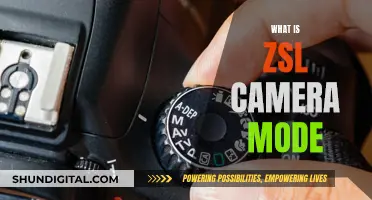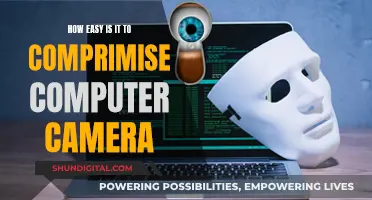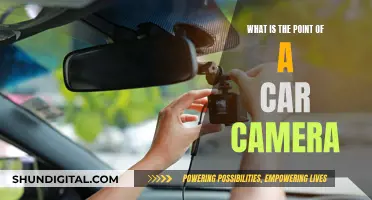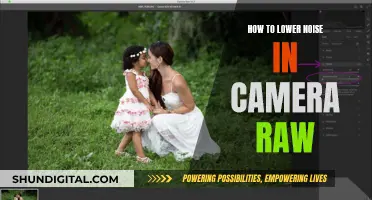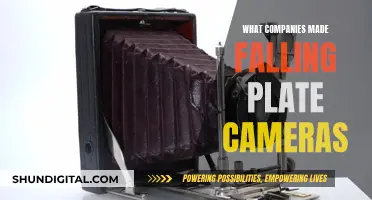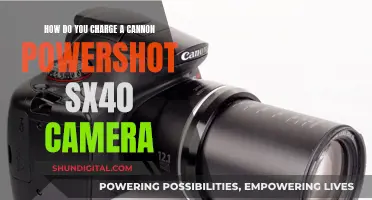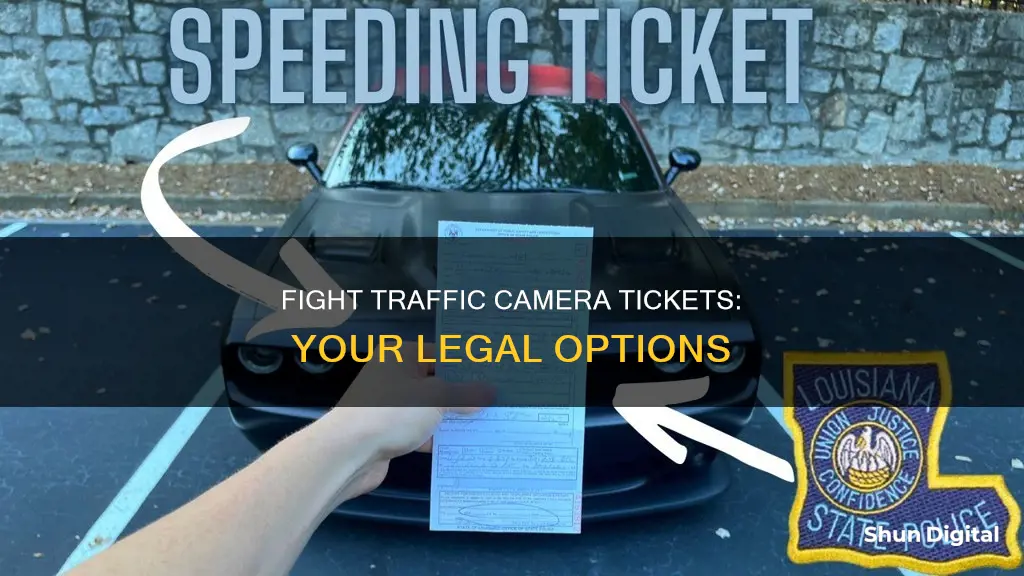
Getting a traffic ticket is never fun, especially when it's a red-light camera ticket that arrives in the mail and seems to come out of nowhere. While it may be tempting to ignore it, this is generally not advisable as it can lead to further fines and penalties, such as points on your driving record, license suspension, or even a reckless driving conviction. However, there are several ways to try to get out of paying a red-light camera ticket. Firstly, you can review the citation and, if you weren't the driver, submit an affidavit form providing the name and contact information of the person who was driving. Additionally, you can request to review the photo or video evidence of the incident and check for any discrepancies, such as an unclear photo of the driver or a missing or obscured warning sign at the intersection. You can also time the yellow light interval at the intersection, as California law requires lights to stay yellow for a specified period before turning red. If the yellow light interval is shorter than the minimum requirement, this can be used as evidence to dispute your ticket. Finally, you can enter a not guilty plea and build a case to present at your trial, including physical evidence and witness testimonies. While it may be a hassle, taking the time to explore these options can help you successfully dispute a red-light camera ticket and avoid any further penalties.
| Characteristics | Values |
|---|---|
| Ignore the ticket | The court may not have proof that you received the ticket, but this is dishonest and risky. |
| Fight the ticket | Check the date, time, and driver. Request photos or videos as evidence. Study up on traffic laws and examine the intersection. |
| Submit an affidavit | If you weren't driving, submit an affidavit form to give the name and contact information of the driver. |
| Check the yellow light interval | California law requires lights to stay yellow for a minimum period. If the yellow light interval is shorter than the minimum, this can be used as a defence. |
| Check for warning signs | Warning signs must be posted within 200 feet of the intersection. If there are no warning signs, or they aren't clearly visible, this can be used as a defence. |
| Check camera maintenance | California state law requires automatic enforcement systems to be calibrated and inspected regularly. If the camera wasn't inspected or failed calibration, the ticket may be dismissed. |
What You'll Learn

Fight the ticket in court
Fighting a traffic camera ticket in court can be a viable option to avoid paying the fine. Here are some steps you can take to fight the ticket in court:
Examine Your Ticket:
Check the date, time, and location of the ticket. Confirm that you were the one driving the car when the ticket was issued. Understand the specific violation you're being charged with and the associated penalties. Review any photos included with the ticket to ensure your car is clearly identifiable.
Plead Not Guilty:
Respond to the citation by mail, online, or in person, if possible. Plead not guilty to dispute the ticket and avoid paying the fine. Meet any deadlines specified for disputing the ticket, typically within 30 days.
Request a Formal Hearing:
Demand a full formal hearing or trial. This may involve attending pre-trial hearings or mediation sessions. Maintain your innocence and aim for a complete dismissal of the ticket.
Research Applicable Laws:
Look for cases and appellate court decisions related to traffic camera tickets in your city or county. Understand if there are specific defences recognised by law, such as requirements for warning signs or necessity defences for speeding.
Prepare Your Defence:
Gather evidence to support your claim, including eyewitness statements, diagrams, and photographs of the scene. If applicable, present evidence that you made a "mistake of fact" due to unclear lane markers or obscured traffic signs. Alternatively, argue that your driving was justified by circumstances, such as avoiding a potentially drunk driver or an emergency medical situation.
Attend the Hearing:
Arrive at the courthouse with your evidence and maintain a professional appearance. Listen to the prosecutor's case and take notes on points you want to address. Challenge the admissibility of the photograph as hearsay and assert your right to confront witnesses. Dispute the authenticity of the photograph if no one from the maintaining company testifies.
Present Your Case:
Explain to the judge why you believe your citation is incorrect, unlawful, or unfair. If necessary, argue that the prosecution cannot prove you were driving, especially if there is no clear photo of you in the driver's seat. Additionally, question the accuracy and reliability of the traffic camera and related equipment by requesting maintenance records.
Clarity Slider: Enhancing Your Photos' Local Contrast
You may want to see also

Claim you weren't the driver
If you want to claim that you weren't the driver when a traffic camera ticket was issued, there are a few things you can do to build a case. Firstly, examine your ticket and confirm that you were driving the car when the ticket was issued. The ticket should include the date, time, and location of the violation, as well as a clear photo of your car, license plate, and driver. If the photo is blurry or doesn't clearly show the driver, this can be used as evidence that the prosecution can't prove you were driving.
If you weren't driving, you'll need to provide an affidavit with the name and contact information of the person who was. However, if you live in a jurisdiction that requires tickets to follow the driver rather than the registered owner of the car, you can argue that the prosecution has no evidence that you were driving.
You can also research the applicable laws and raise any defences that may apply. For example, if warning signs for the camera were obscured or not present, this could be a valid defence. Additionally, some states recognize a necessity defence for speeding, so if you were speeding to avoid harm, this could be argued as a valid reason.
When building your case, be sure to stay organized and professional. Treat courthouse staff with respect and do not interrupt or speak directly to the prosecutor. Present your case calmly and explain why you believe the citation is incorrect, unlawful, or unfair.
Quickly Recover Deleted Camera Raw Files
You may want to see also

Check for warning signs
Warning signs are an important indicator of the presence of traffic cameras. According to VC§ 21455.5(a) (1), warning signs must be posted at intersections with traffic cameras. These signs should be visible to traffic approaching from all directions, or at all the main entrances to a town, including freeways, bridges, and state highway routes. While the law does require the posting of warning signs, it gives cities the choice of where to place them, and it is not specific about how close the signs must be to the intersections. The Cal Trans design states that warning signs must be at least 30 inches wide by 40 inches high and 6 feet off the ground.
However, warning signs are not always posted right at the intersections, so drivers should be vigilant when entering or exiting a city, especially from a freeway off-ramp. If you receive a ticket, you can go back and search for warning signs. If you can't find them, or if the signs are not the correct size or are blocked or damaged, you can take photographs to dispute the ticket. If the signs were not posted in accordance with the law, then you weren't given the required notice, and a foundational requirement for the camera enforcement system is missing.
In addition to warning signs, there are other ways to spot traffic cameras. Some cities will post signs at a distance of 50 to 500 feet from the signal where the camera has been installed. While the presence of a sign doesn't always indicate the presence of a camera, the absence of a sign may mean there is no camera. Knowing what traffic cameras look like can also be helpful in identifying them. They come in different sizes and designs, including large, square, silver, or white boxes with the flash installed beneath the box, or with the flash installed inside the box. Some cameras appear more like surveillance cameras, with rectangular boxes. Most states install traffic cameras on tall silver or white metal poles close to the signal, or attach them to street light poles that are installed in the right position.
The Chevrolet Camaro: Engineering a Muscle Car Legend
You may want to see also

Time the yellow light
Timing the yellow light can be an effective strategy to beat a red-light camera ticket. In California, the law requires the yellow light to last for a minimum of 3 seconds. If the yellow light at the intersection where you received the ticket is shorter than this, you may be able to get your citation dismissed.
To do this, return to the intersection where you were ticketed and time the yellow light. If it lasts less than 3 seconds, take note of this and collect other evidence, such as photos of the intersection and copies of relevant California traffic laws. You can then use this evidence to build your case and explain to the judge why you believe your citation is incorrect or unfair.
It is important to note that simply ignoring a red-light camera ticket is not advisable. While the court may not be able to guarantee that you received the ticket, ignoring it could result in escalated consequences such as a suspended license or increased fines. Instead, taking proactive steps to understand your options and build a case for dismissal is a more effective strategy.
iPad Night Mode Camera: Does It Exist?
You may want to see also

Ignore the ticket
Ignoring a traffic ticket is not advisable, and can lead to serious consequences. If you ignore a traffic ticket, the court will mark it as a failure to appear or respond, commonly known as an FTA. This will go on your driving record and be sent to the Department of Licensing (DOL). If your ticket is marked FTA, you will have to pay the fine stated on the ticket, plus an additional default penalty. If you fail to pay these penalties, the court will notify the DOL and send the fines to a collection agency. If an FTA remains on your record, your license will be suspended until you resolve the FTA by setting up a payment plan.
Ignoring a traffic ticket can also result in a summons, and if you don't show up for your court date or pay the ticket, a bench warrant or traffic warrant may be issued. It is illegal to ignore a traffic ticket, and you could face jail time, even if it's just for a few days. Ignoring a ticket will also make it harder to negotiate favourable outcomes in the future, as it will be on your record. You may also face increased insurance rates and difficulty in getting a car loan or new car insurance.
In California, if you ignore a red light camera ticket, the court may proceed to detain or suspend your driver's license until the charge is paid. Many people who choose to disregard the citation later regret their decision. If defendants fail to appear in court, the court may issue an additional fine. However, it is important to note that there is some debate about the consequences of ignoring a red light camera ticket, as the court has no proof of receipt. Nevertheless, ignoring any type of traffic ticket is extremely risky and can lead to serious repercussions.
Building a Camera Battery: Ion Basics and Beyond
You may want to see also
Frequently asked questions
Ignoring a traffic camera ticket is risky and not advisable. The ticket will likely not disappear, and you may have to spend additional time and money trying to fight it. The court may also suspend your license until the charge is paid.
If you weren't the one driving, you are not responsible for paying the ticket. However, you are required by law to submit an affidavit form with the name and contact information of the person who was driving.
First, check the date and time of the incident and review your schedule to confirm whether or not you were driving. Then, request photos or videos as evidence. If there is no clear photo of the driver, the state may not be able to prove its case. Return to the intersection to check for warning signs and time the yellow light interval to ensure they meet the required standards.


